Key Points:
- Florida kingsnakes are non-venomous themselves but are immune to venom, an ability that stands them in good stead since they enjoy eating venomous snake species and their eggs.
- They are clever escape artists, a quality that prospective pet owners will need to take into account since they will attempt to wriggle out of their enclosures.
- The biggest Florida kingsnake ever found was 69.4 inches (almost 6 feet) long.
Whether you’d like it or not, snakes are pretty common in Florida. So, it’s not a surprise anymore if you find one in a yard, a golf course, a park, a garage, or even in a house if you live in the state or are just visiting. Florida serves as home to about 46 species of native snakes, with only six of those being considered venomous. Although they seem to be a lot, most snakes here aren’t a threat to humans and are not venomous.
Kingsnakes are among the 46 species of snakes thriving in the land of Florida. They got their name because they constantly engage in cannibalism by eating other snakes and venomous snakes such as copperheads and rattlesnakes since they are surprisingly immune to snake venom. They are typically medium-sized snakes, killing by constricting their victims rather than biting them.
Some kingsnake species have the chance to grow into abnormally large sizes, just like the most common kingsnake in Florida: the Florida kingsnake.
Today, we’ll find out about the largest Florida kingsnake ever found, its length, its diet, where it could be found, and many other species in Florida to look out for.
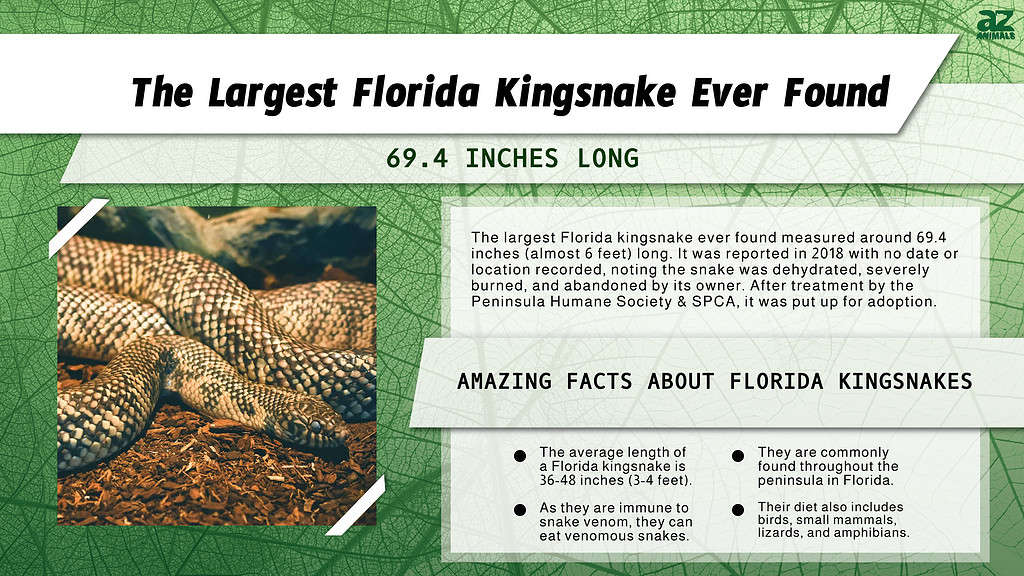
What Are Florida Kingsnakes?
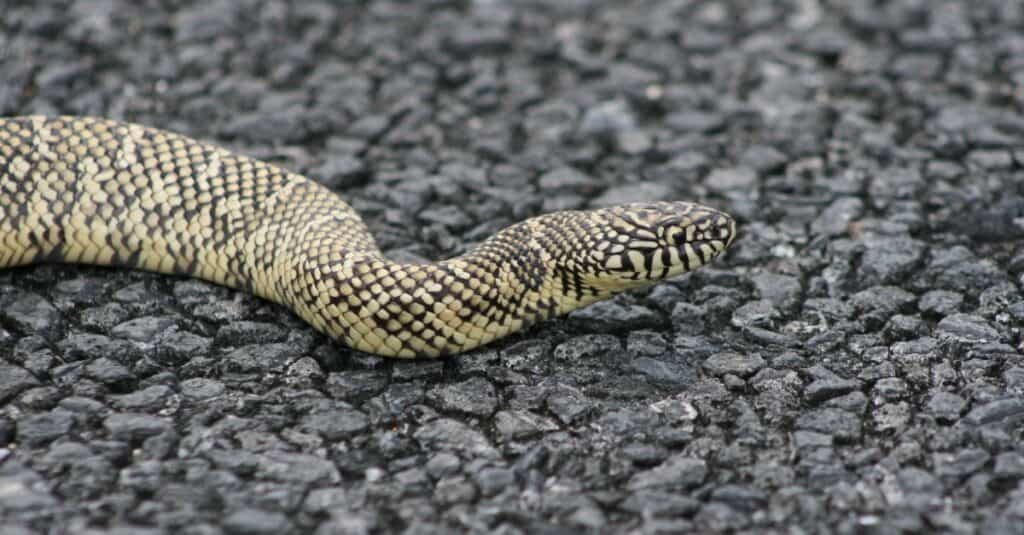
Florida kingsnakes appear brown and yellow with more than 40 yellowish crossbands down their backs.
©iStock.com/tome213
Florida kingsnakes are only found in Florida. They are primarily identified by their color, as they appear brown and yellow with more than 40 yellowish crossbands down their backs and a chain-like pattern along their sides.
Their scales between the crossbands become lighter and shiny and smooth as they age. Young Florida kingsnakes are mostly black, with white or yellow crossbands throughout their bodies.
They are solitary and non-venomous snakes, meaning they do not pose a threat or danger to people or pets, yet they bite to defend themselves when needed. Florida kingsnakes are mostly shy and avoid contact with people and pets and will only bite if people intentionally and constantly bother them.
They will typically flee when confronted, as they are not aggressive and rarely attack people.
How Big Is the Largest Florida Kingsnake Ever Found?
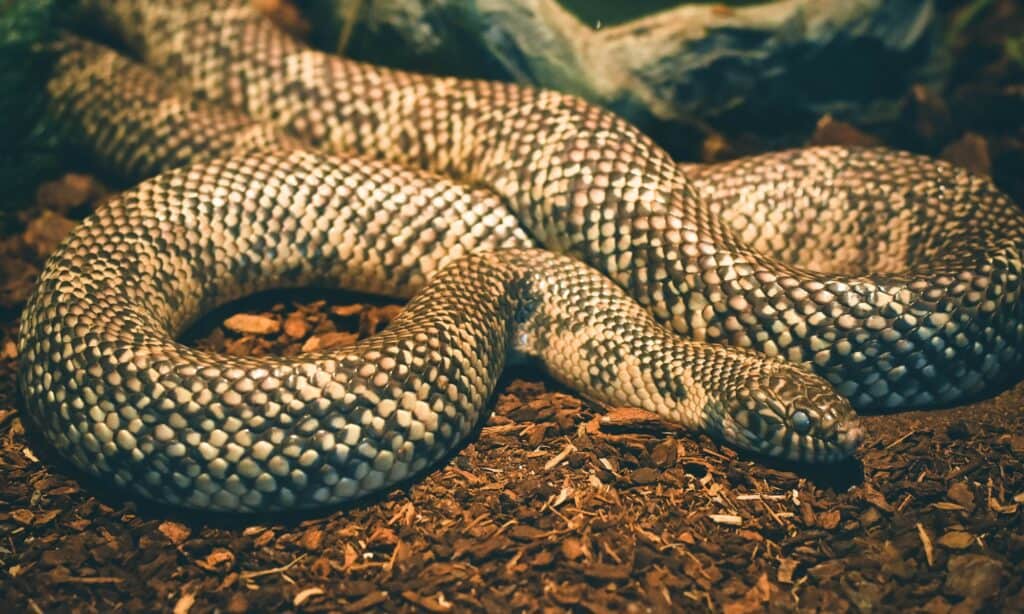
The largest recorded size of a Florida kingsnake is about 69.4 inches long.
©iStock.com/Duangphorn Wiriya
The average length of a Florida kingsnake ranges between 36 to 48 inches (3-4 feet), yet the largest recorded size of a Florida kingsnake is about 69.4 inches (almost 6 feet). While there is no exact date or location of when and where the largest recorded Florida kingsnake was found, a news report in 2018 shows a seriously burned 6-foot male Florida kingsnake that was named Felix.
The snake was dehydrated and had deep burns almost throughout its body when the authorities found it. It was left and abandoned by its owner in an enclosure that was too small for it and was next to a heat lamp because he didn’t have enough money for its medical treatment. After three months of treatment at the Peninsula Humane Society & SPCA, Felix was put up for adoption, with only expert snake handlers able to apply.
Where to Find Florida Kingsnakes
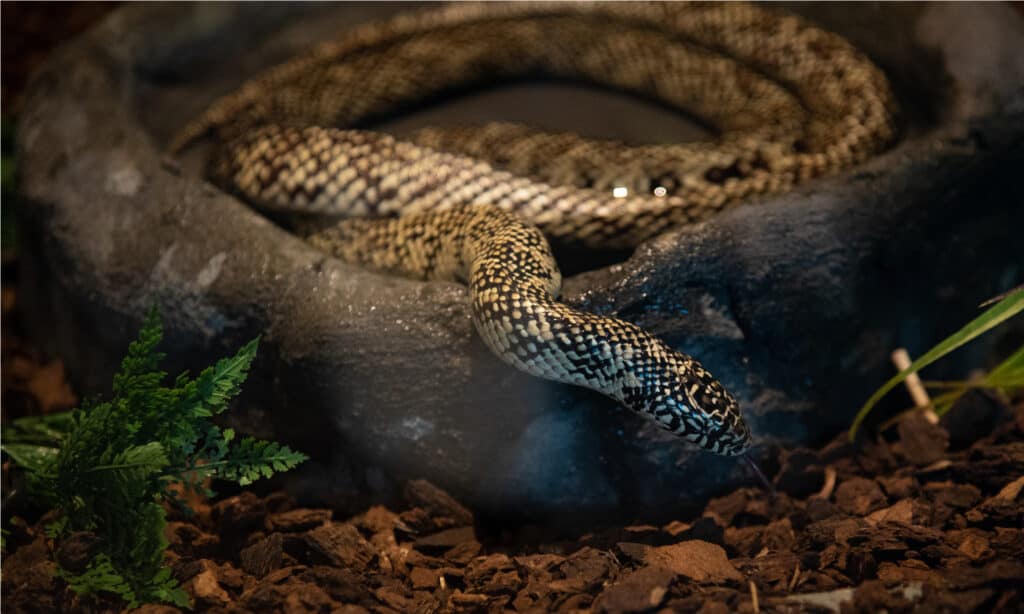
Florida kingsnakes are diurnal, but can be active at night during hot summers.
©Bond JP/Shutterstock.com
Florida kingsnakes are found throughout the peninsula and its cypress strands, grasslands, prairies, marshes, drainage canals, estuaries, and pinelands. They can be located south of Volusia County to Key Largo in Pinellas.
Florida kingsnakes are also commonly found in the sugarcane plantations surrounding Lake Okeechobee. These snakes are diurnal, meaning they are active during the day. If there are hot summer nights, nocturnal activity may happen.
What Do Florida Kingsnakes Eat?
They are commonly called “chain kings” or “chain snakes” for having a diverse diet and their ability to be immune to snake venom. They have a broad diet that includes birds, small mammals, lizards, amphibians, venomous snakes, and other kingsnakes. Their preferred prey is reptiles, particularly their eggs. These snakes kill larger sized prey by constriction and swallow smaller prey whole immediately.
Do Florida Kingsnakes Make Good Pets?
Florida kingsnakes can make good pets due to their docile temperament and undemanding nature. Although hatchlings might be aggressive, their bites are not poisonous and can be tamed immediately. They are a good pet choice for beginners and expert handlers alike.
They are somewhat considered “talented escape artists,” meaning that they would always find a way within tight spaces to escape, so Florida kingsnakes in captivity need a tight-fitting enclosure with a securely-locked lid. These kingsnakes are also the happiest under warm temperatures, so setting the cage of heating pads and keeping the temperature under control is also the best way to care for them.
Florida kingsnakes in captivity are also often fed with fresh and disease-free rodents or store-bought frozen meat. Hairless mice are also one of the best choices to feed them. Rodents in the wild are not suggested as they may carry diseases that will put your pet kingsnake’s life at stake.
What Other Kingsnakes Are Found in Florida?
1. Eastern Kingsnake
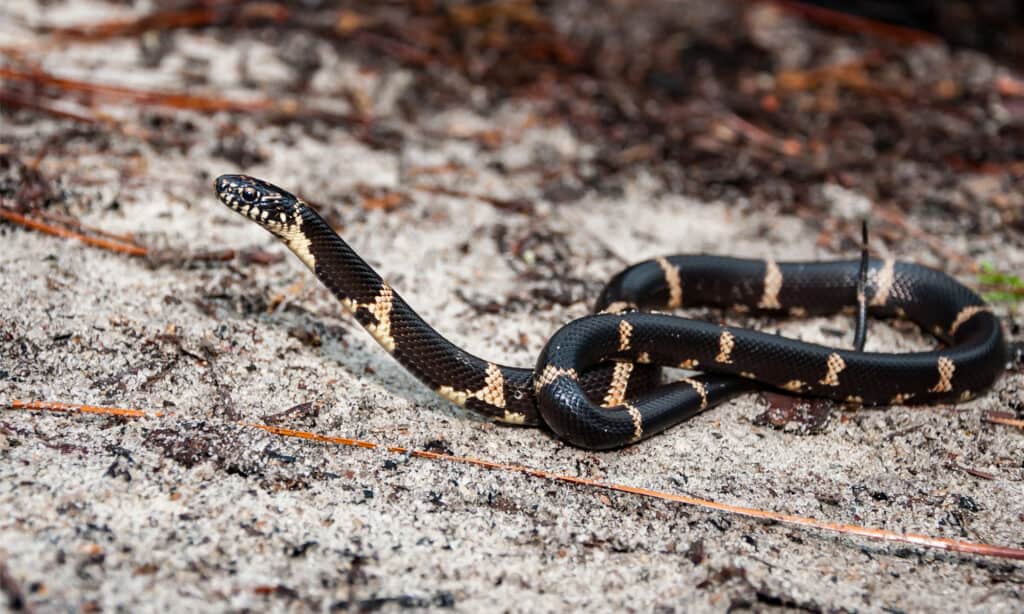
The eastern kingsnake ranges from 36 to 48 inches in length.
©iStock.com/JasonOndreicka
The eastern kingsnake is recognized for having smooth black scales with white or yellow chain-link bands that cross the back and connect to the sides. They range from 36 to 48 inches in length, which is closely similar to that of a Florida kingsnake.
2. Scarlet Kingsnake
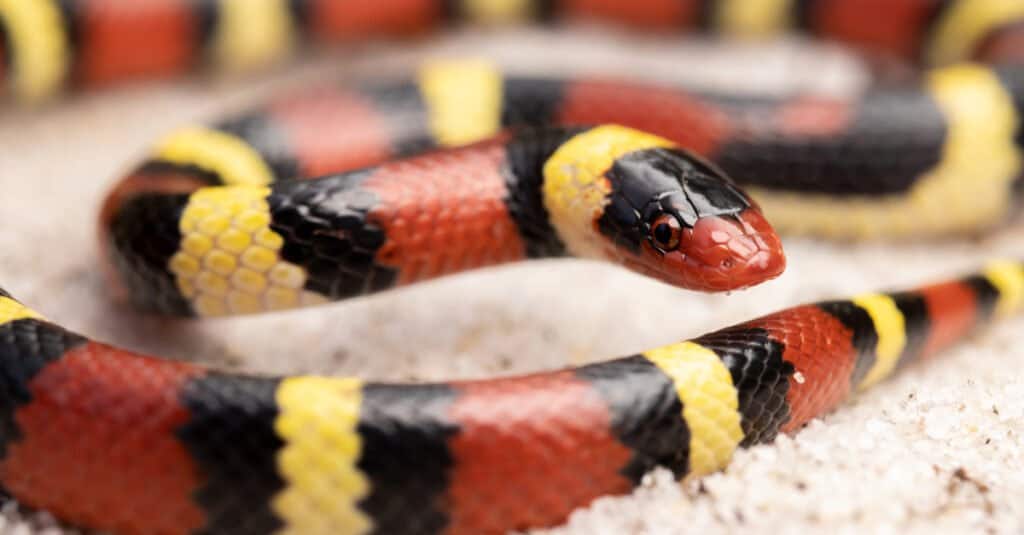
Scarlet kingsnakes are recognized for their bright red, black, and yellow markings.
©Radiant Reptilia/Shutterstock.com
Also known as the scarlet milksnake and the scarlet snake, scarlet kingsnakes are recognized for their bright red, black, and yellow markings that make them frequently mistaken for coral snakes. Scarlet kingsnakes are the nocturnal kind of kingsnakes that hunt primarily at night and eat small lizards, snakes, and rodents. They can burrow and also climb very well, unlike other kingsnakes. They are also considered one of the most beautiful snakes in the state due to their color.
3. Mole Kingsnake
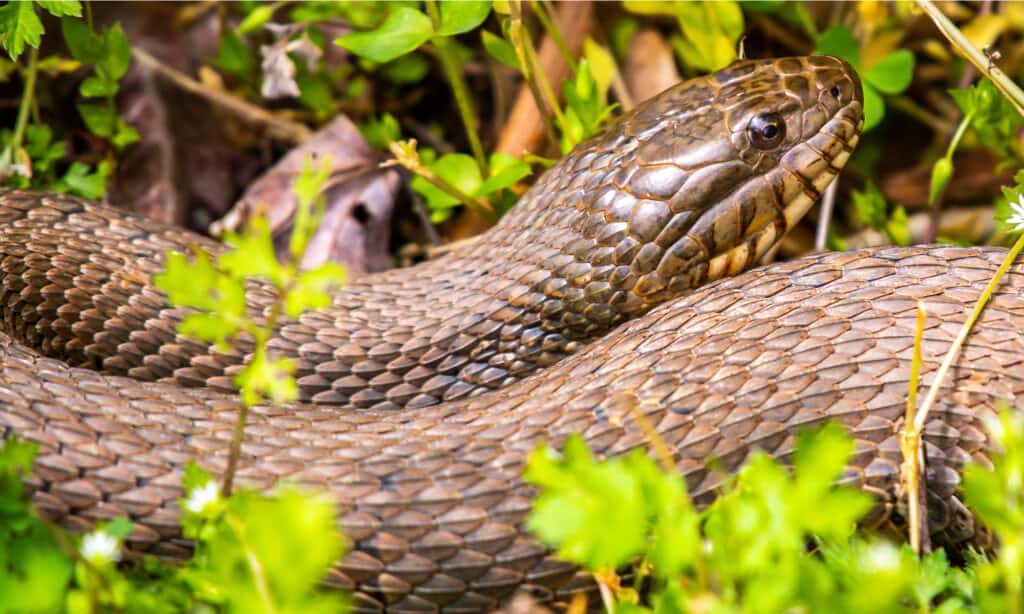
Mole kingsnakes eat other snakes, lizards, birds, and amphibians.
©Krumpelman Photography/Shutterstock.com
Growing 30 to 40 inches, mole kingsnakes spend their time underground and aren’t seen very frequently. They are recognized for having very smooth scales that are light or dark brown with reddish-brown spots. Mole kingsnakes eat other snakes, lizards, birds, and amphibians such as other kingsnakes.
4. Apalachicola Kingsnake
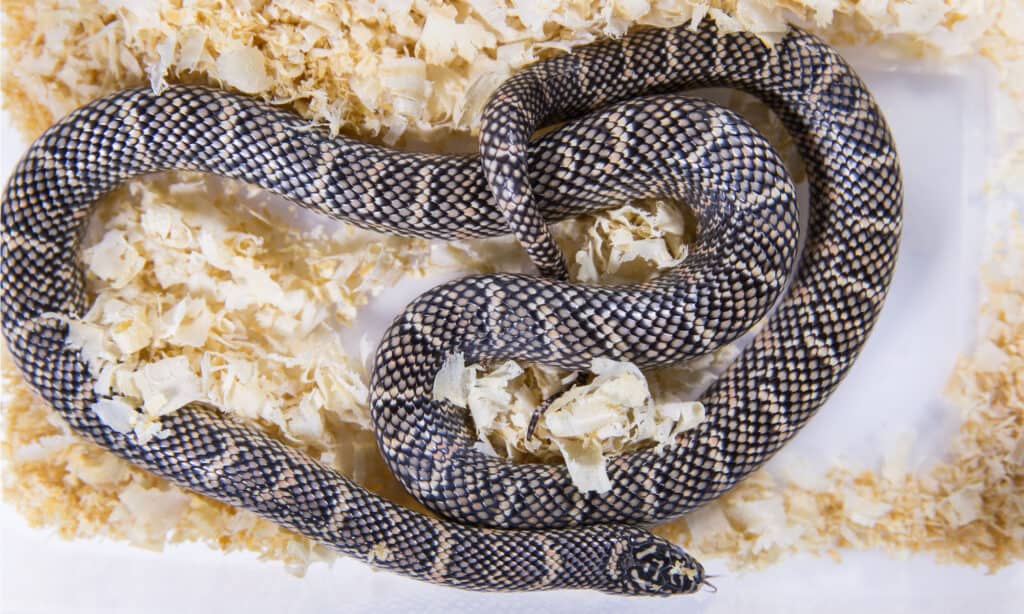
Apalachicola kingsnakes range from 36 to 48 inches in length.
©Left Handed Photography/Shutterstock.com
Like other kingsnakes, Apalachicola kingsnakes range from 36 to 48 inches (3-4 feet) in length, while the largest recorded was more extensive than a Florida kingsnake at 82 inches (6.8 feet). They are distinguished from other kingsnake species as they have a lighter coloration of bands throughout their bodies, although they look much like Florida kingsnakes in the wild.
The Evolution and Origins of the Kingsnake
Kingsnakes are a group of non-venomous snakes found in the Americas, primarily in North and Central America. The origins of the kingsnake are uncertain, but it is believed that they evolved from a common ancestral species in the Americas. Over time, they have diversified into several distinct species and subspecies, each with its own unique physical and behavioral characteristics.
Kingsnakes are known for their adaptability and ability to thrive in a variety of habitats, including forests, deserts, and grasslands. They feed on a variety of prey, including other snakes, lizards, birds, and small mammals. They are also known for their resistance to the venom of other snakes, which has helped them to become one of the most successful and widespread groups of snakes in the Americas.
The evolution of the kingsnake has been shaped by a variety of factors, including genetic variation, natural selection, and adaptations to different habitats and climates. Over time, they have developed a variety of physical and behavioral adaptations that have allowed them to survive and thrive in their environments.
Today, kingsnakes are a valuable part of the ecosystems in which they live, playing an important role in controlling populations of other reptiles and small mammals.
Other Record-Breaking Snakes
On average, prairie kingsnakes usually grow to around 3 feet long, ranging from 30 to 40 inches.
Bu, there have been some exceptional specimens, such as the largest prairie kingsnake ever recorded, which was an astonishing 56 1/4 inches long, exceeding 4.5 feet in length.
These bigger snakes are mostly found in Kansas, where the ample farmlands and prairies provide them with abundant shelter and prey.
Prairie kingsnakes have a long lifespan, exceeding 10 years, provided they have an abundant supply of prey, including rodents and venomous snakes. They start out as small snakelings, measuring less than 6 inches at birth, and must grow considerably to reach their adult length.
The photo featured at the top of this post is © David Huntley Creative/Shutterstock.com
Discover the "Monster" Snake 5X Bigger than an Anaconda
Every day A-Z Animals sends out some of the most incredible facts in the world from our free newsletter. Want to discover the 10 most beautiful snakes in the world, a "snake island" where you're never more than 3 feet from danger, or a "monster" snake 5X larger than an anaconda? Then sign up right now and you'll start receiving our daily newsletter absolutely free.
Thank you for reading! Have some feedback for us? Contact the AZ Animals editorial team.






